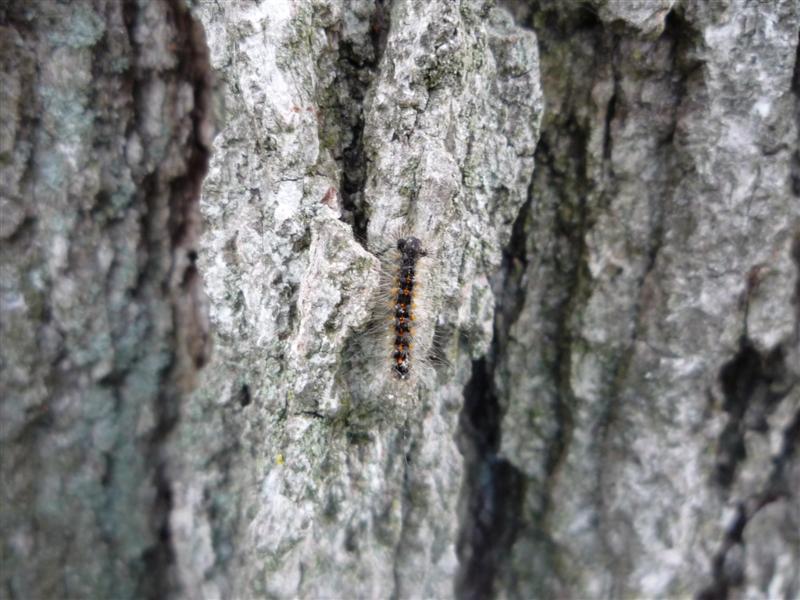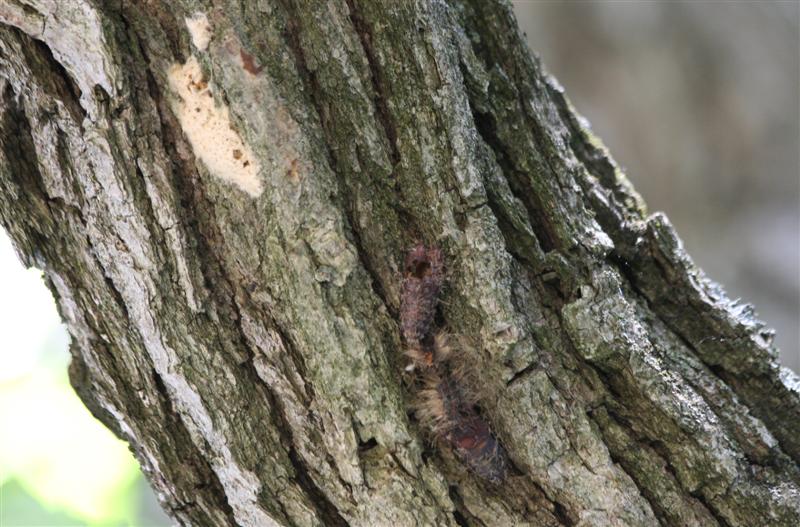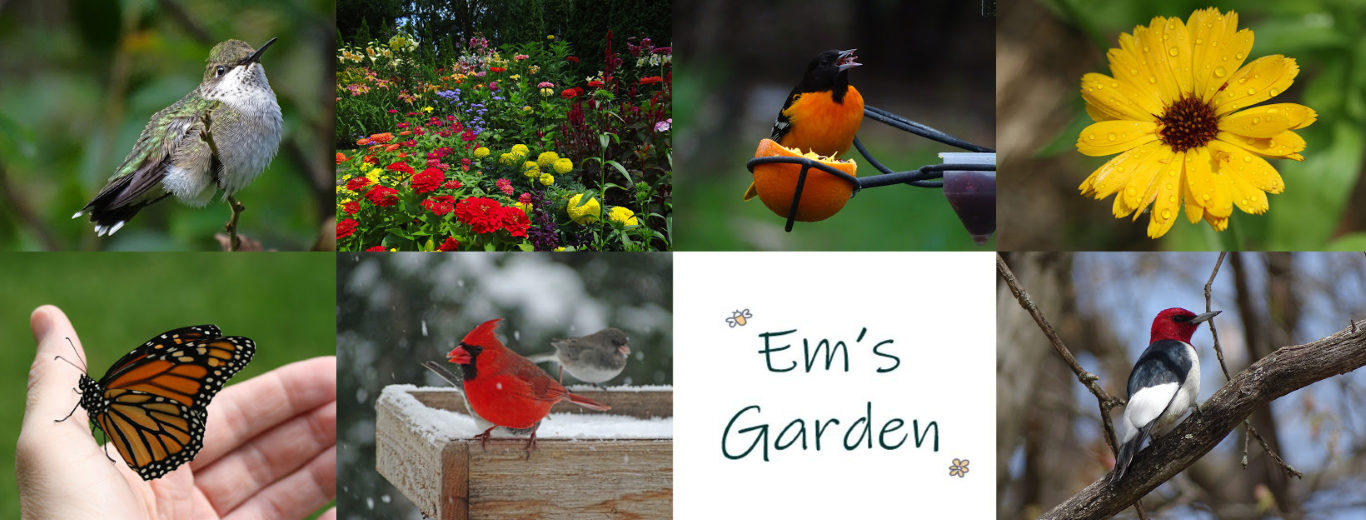About ten days ago I saw a caterpillar hanging from a silky string in the beautiful Bur Oak tree in our front yard. I got an uneasy feeling and grabbed the string and flung the caterpillar onto the trunk of the tree so I could photograph it and compare it to online photos of gypsy moth larva.

I viewed some photos online, but none of the larvae in the photos matched my little guy exactly, and I was happier in my state of denial. I was concerned about getting all my flowers in the garden before the mosquito situation got any worse.
I forgot about the caterpillar until late last week when I was at the corner of a busy Madison intersection where one of the oldest and most beautiful oak trees grows. I gazed up at it and noticed the telltale cream-colored egg masses of gypsy moths that my neighborhood newsletter suggested we zap in the microwave in the fall and winter. The poor tree was just covered with them.
Back at home, I looked more carefully at the oak that had the flying caterpillar on it. Sure enough, it had egg masses on it as well (thankfully not as many):

I had to use a zoom lens to look closely at any of them because they were so high up in the tree. In one of the photos I downloaded, I noticed some pupae casings near the egg mass:

I already knew the answer to the question, but I e-mailed my photos to the UW Entomology Department for verification. Oh yes indeed…gypsy moths.
Gypsy moth larvae molt 5 or 6 times before they are full-grown caterpillars. Most of the photos online are of the adult caterpillars, which is why I couldn’t find any exact matches for my tiny guy.
During the first three instars (phases between molts), the caterpillars feed in the canopy during the day. However, when they are full-grown, they hide in leaf litter on the ground during the day and climb into the tree to feed at night. That’s why I haven’t seen any caterpillars on the trunk in the early morning or evening. My caterpillars aren’t yet on the move.
Once they really get munching, there will be frass and chewed-up leaf bits falling from the sky. According to our neighbor down the street, they’ll lay egg masses in our siding. The caterpillars will hide in my flowerbeds during the day and mow down all their other favorite trees and shrubs which includes Serviceberries (I have two of them) and apple trees (no, we haven’t taken it down yet). I’m really looking forward to all of that.
This particular oak touches branches with a struggling White Oak that borders my backyard. So far I see no egg masses on that tree, but I’m sure it’s only a matter of time.
